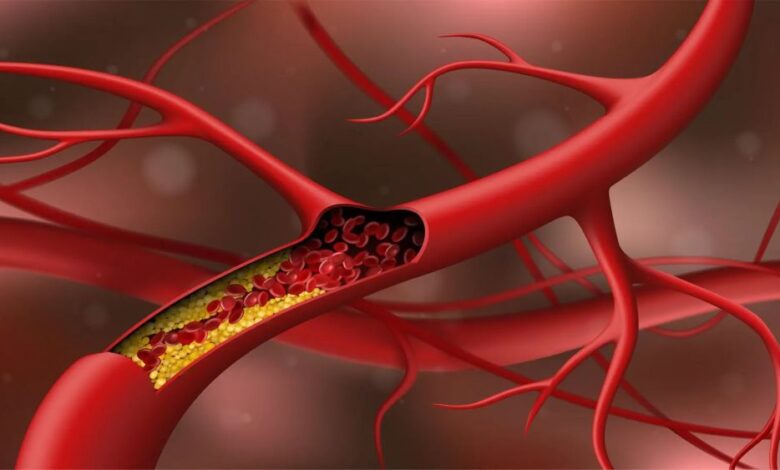
Cholesterol is a waxy fat-like molecule (lipid) produced in the liver and found in cells and tissues throughout the body, as well as in the bloodstream. Cholesterol is only one of several types of lipids found in the body, but it is the one most commonly known; another well known lipid is triglyceride. Cholesterol is actually part lipid and part protein, and is often referred to as lipoprotein.
In addition to being produced by the liver, some cholesterol is also introduced into the body through diet, mainly from animal-based foods, such as red meat, full-fat dairy, egg yolks, and others. The body needs cholesterol to stay healthy and perform various functions; they are vital for the formation of cell membranes, certain hormones, and vitamin D, as well as for enzymes that help digest food, and for healthy cell function.
Since cholesterol is insoluble in water it cannot move on its own in the blood. To facilitate the transport of cholesterol, the liver produces other lipoproteins which carry the cholesterol through the bloodstream. The two major forms of lipoprotein that transport cholesterol are low-density lipoprotein (LDL) and high-density lipoprotein (HDL).
Cholesterol carried by low-density lipoproteins in the blood to the cells is known as LDL cholesterol, often referred to as the ‘bad cholesterol. On the other hand, cholesterol absorbed by high-density lipoproteins from blood is known as HDL cholesterol, or the good cholesterol. The HDL cholesterol transports cholesterol from blood back to the liver where it is excreted from the body. Healthy levels of HDL cholesterol, can help lower your risk of blood clots, heart disease, and stroke.
While a certain level of cholesterol is needed by the body, high levels of cholesterol and other lipids lead to hyperlipidemia, which raises the risk of heart attacks and strokes. Too much LDL in the blood can lead to it collecting on the artery walls where it contributes, along with other fats, calcium, and other substances, to the buildup of plaque (athero) in the arteries.
The plaque buildup gradually leads to the narrowing and hardening (sclerosis) of the arteries resulting in atherosclerosis, which reduces the flow of blood to organs and tissues throughout the body. Narrowing of arteries and increase in pressure of blood could cause portions of the plaque to break off in the form of blood clots that could end up blocking blood flow to an organ. If the blockage is in an artery leading to the heart or brain it could lead to a heart attack or stroke.
High cholesterol typically does not cause any symptoms, and many people do not even realize they have high cholesterol until they develop serious complications, such as a heart attack or stroke. The only way to find out if your cholesterol is high is through a blood test that measures cholesterol in milligrams per deciliter of blood (mg/dl), or in some cases millimoles per liter (mMol/l).
The blood test results usually show total blood cholesterol, as well as details on HDL, LDL, and 20 percent of your total triglycerides, which is another type of lipid found in the blood that stores unused calories and provides energy to the body when needed. While the blood test results could vary based on individual’s age, gender, health history or other factors, in general for adults who are otherwise healthy it is recommended that total cholesterol level be :
HDL. The higher this number, the better. It should be at least higher than 55 mg/dL for females and 45 mg/dL for males.
LDL. The lower this number, the better. In healthy adults it should be no more than 100 mg/dl. If you suffer from heart disease, blood vessel disease, or diabetes, it should be no more than 130 mg/dl.
Triglycerides number should be below 150 mg/dl. If your triglycerides are high and your LDL is also high or your HDL is low, you are at risk of developing atherosclerosis.
For adults aged 20 and over, borderline high total cholesterol levels are 200–239 mg/dl; borderline high LDL levels are 130–159 mg/dl; and borderline high triglycerides are 159-199 mg/dl . Some test results are marked in millimoles per liter (mMol/l). To convert from mmol/l to mg/dl, multiply by 0.056. To convert from mg/dl to mmol/l divide the mg//dl value by 18.02.
There are several reasons for high blood cholesterol levels, including eating too many foods that are high in cholesterol, saturated fats, and trans fats. Living with obesity can also increase your risk of high cholesterol, as can other lifestyle factors such as physical inactivity and smoking.
The genes you are born with can also affect your chances of developing high cholesterol. Genes are passed down from parents to children and instruct your body to carry on its processes. Some genes instruct your body on how to process cholesterol and fats, if your parents have high cholesterol, you may inherit their genes and be at a greater risk of this condition.
In rare cases, high cholesterol is caused by familial hypercholesterolemia, a genetic disorder that prevents your body from removing LDL. According to the US-based National Human Genome Research Institute, most adults with this condition have total cholesterol levels above 300 mg/dl and LDL levels above 200 mg/dl. Other health conditions, such as diabetes and hypothyroidism, may also increase your risk of developing high cholesterol and related complications.
Nutritionists point out that foods high in cholesterol, saturated fats, or trans fats include red meat, organ meats, egg yolks, and high fat dairy products. Processed foods made with cocoa butter or palm oi, and deep-fried foods, such as potato chips, onion rings, and fried chicken, as well as certain baked goods, such as some cookies and muffins are high in saturated and trans fats
Eating fish and other foods that contain omega-3 fatty acids may help lower your LDL levels. For example, salmon, mackerel, and herring are rich sources of omega-3s. Walnuts, almonds, ground flaxseeds, and avocados also contain omega-3s that are helpful in lowering LDL levels.
Remember that high cholesterol is a controllable risk factor for coronary heart disease, heart attack and stroke. You can help keep it at an acceptable level by the three ‘C method’. Check your blood cholesterol level regularly, change your diet or lifestyle if your test results are high, and consult a healthcare professional if you need help to control cholesterol.














